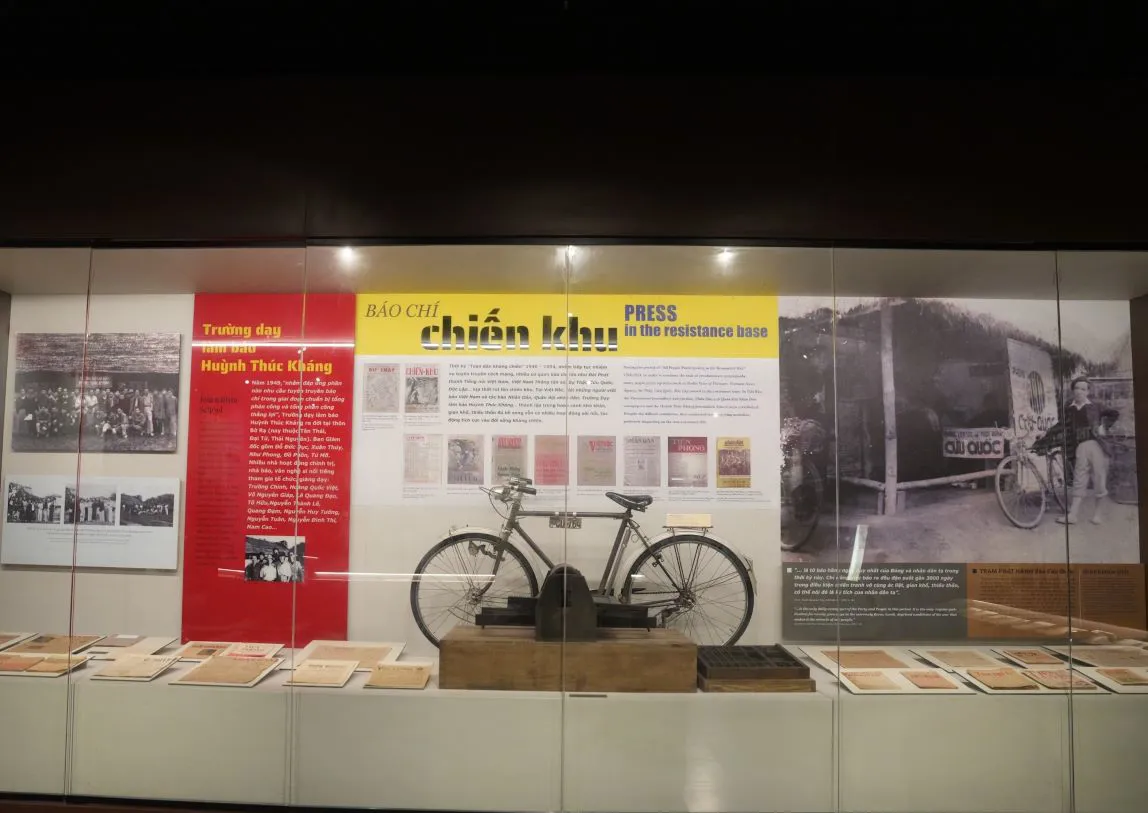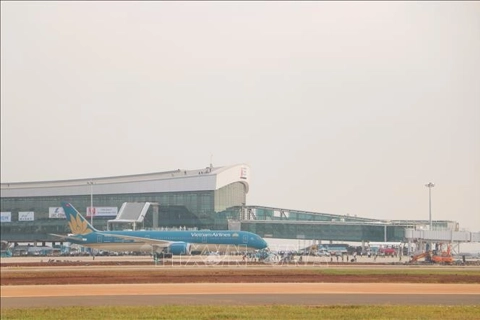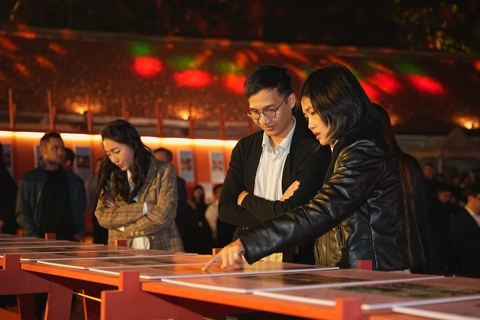Vietnam Press Museum: The intersection of past and present journalistic values
The Vietnam Press Museum showcases the history and evolution of the country's press through valuable documents and artifacts.
THE HANOI TIMES — In the heart of Hanoi, the Vietnam Press Museum quietly tells the story of a nation through ink and paper.
Housing thousands of documents, artifacts, and personal mementos, the museum preserves the evolution of journalism in Vietnam, capturing not only the development of the press but also the shifting tides of national history and social life.
Tran Thi Kim Hoa, a member of the museum’s management board, said the Vietnamese press has walked in step with the nation from its earliest days.
Since the first newspaper hit the stands on April 15, 1865, and later, the birth of the revolutionary press marked by the founding of Thanh Nien (Youth) newspaper on June 21, 1925, journalism has served not only as a recorder of events but also as a powerful instrument in the fight for independence and nation-building.

The museum is a cultural space to understand the role of journalism in national development. Photo: Huy Pham/The Hanoi Times
According to Hoa, since its establishment, the museum has collected more than 20,000 items and documents, including over 700 rare items featuring significant events in Vietnamese press history for regular display.
The museum's exhibition is divided into five sections, corresponding to the following periods: 1865–1925, 1925–1945, 1945–1954, 1954–1975, and 1975 to the present.
The nearly 1,500-square-meter exhibition area applies television, radio, and digital technology solutions for better services.
A highlight of the museum is the pen symbol lying on a background of lotus petals in the area showcasing items and documents related to the Vietnamese press from 1865 to 1925. This symbolizes the pure ethics of journalism and journalists.
The museum also has a space to pay tribute to journalists who died for the nation, its people, and the Vietnamese revolutionary press.
"This place vividly illustrates the evolution of the press from a tool of resistance to champion of the people in peace, celebrating journalism's role in defending the nation," Hoa said.

One of the most striking items in the museum is a 2.1-meter-long propaganda loudspeaker that was used along the Ben Hai River. With a range of up to 10 kilometers, it was a powerful tool for psychological warfare. Photo: Huy Pham/The Hanoi Times
One of the museum's most notable artifacts is a 500-watt loudspeaker, which was placed on the north bank of the Ben Hai River in the central province of Quang Tri. It broadcast the Voice of Vietnam radio program, helping to disseminate information and foster solidarity among compatriots on both sides of the North-South border during the war against America.
There is also the People's "newspaper bunker" that survived bombing, the darkroom of the Vietnam News Agency, and the "heavenly horse" camera that marked the birth of Vietnamese television.
Museum staff have worked hard to find artifacts and original documents. Together, they create a deep impression on viewers, especially journalists, who recall memories of their time working in journalism.
With the advancement of technology, the museum uses digital means to present valuable documents while reaching a wider audience. In addition to displaying ancient newspapers, the museum will expand to showcase the evolution of journalism in the digital age, where information is transmitted not only through paper but also through digital means, such as websites, social networks, and mobile applications.
The Vietnam Press Museum preserves historical artifacts and documents of the Vietnamese press and is a strong source of inspiration for the younger generation, helping them to find their way and develop their careers.

During the war against American troops from 1954 to 1975, North Vietnam advanced its media landscape through developments in print, radio, and television, focusing on building socialism and supporting the South's struggle. Photo: Huy Pham/The Hanoi Times
"When young people face both opportunities and challenges in pursuing journalism amid rapid technological development, the Vietnam Press Museum is an essential source of knowledge and inspiration," said Hoa.
As the 100th anniversary of the Vietnamese Revolutionary Press approaches (June 21, 1925-2025), many people are heading to the museum to admire the evolution of journalism.
Visiting the museum, Nguyen Anh Thu, a student from the Academy of Journalism and Communication, said that the Vietnamese revolutionary press has developed very strongly. It deepens her pride and fuels her aspiration to contribute to the country's press built up by previous generations.
"The Vietnam Press Museum preserves the legacy of both global and Vietnamese revolutionary journalism, being a truly interesting destination for the public," said Thu.
Journalist Ho Quang Loi, Vice President of the Digital Media Association, was deeply moved as he passed through the exhibition booths. He is proud of the Vietnamese Revolutionary Press and believes that it has made a significant contribution to national liberation and building.
"At the Vietnam Press Museum, we can see the history of the Vietnamese press, as well as the history of our country and our people. We can see the flow of history, historical culture, struggle, and national development," he said.










